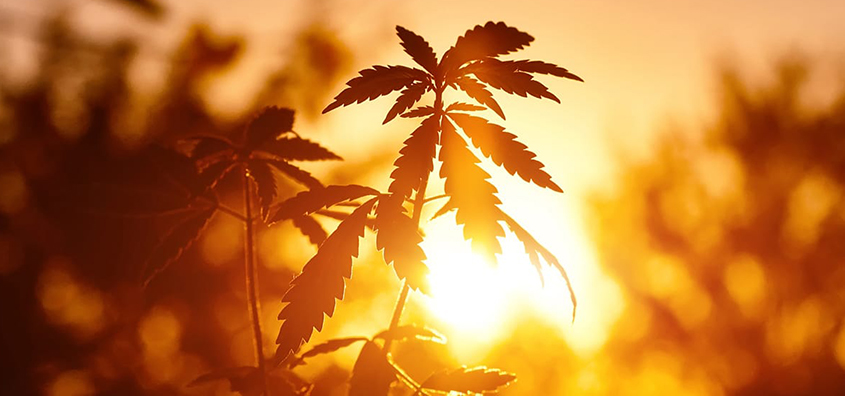You are here
Home 🌿 Recreational Marijuana News 🌿 Cannabis store openings in Canada only slightly affected the number of users 🌿Cannabis store openings in Canada only slightly affected the number of users

Despite Canada approaching its third anniversary of cannabis legalization, some municipalities still ban licensed shops. Other countries talking about legalizing cannabis also seem inclined toward minimizing legal access. But my research suggests those policies are probably counterproductive.
User numbers have also grown. In 2018, 14 per cent of the population aged 15 and up admitted to using cannabis. That reached 20 per cent in 2020, equivalent to 6.2 million users.
Canada’s cannabis approach differs greatly from the American one. But both countries share one detail: municipal governments opting out of allowing cannabis stores.
Local store bans
Several million Canadians live in places that ban licensed shops, including cities like Mississauga, Ont., and Surrey, B.C.
Meanwhile in the U.S., most California municipalities opted out of allowing stores after recreational sales began there in 2018. More recently, 71 per cent of towns in New Jersey and 90 per cent of those in Maine did likewise. New York’s communities have until Dec. 31 to decide.
Licensed shops could provide economic benefits. But some politicians and residents worry they’d also boost cannabis use and crime.
This apparent trade-off motivated my research.
Stores, sales and users
My study compared per capita growth in store numbers, recreational cannabis sales dollars and user numbers from 2018 to 2020 in Canada.
Stores and sales were strongly related. Differences in provincial store growth explained 46 per cent of the differences in sales growth. That’s a lot, given that many other factors like pricing, consumer tastes and weather also affect sales.
By contrast, store growth explained just eight per cent of user growth. A simple quarterly trend better explained the user increases.
In other words, almost the same user growth occurred regardless of how many shops opened. But where shops were plentiful, users increasingly bought legally.
One reason for the weak stores-and-users relationship was that user estimates came from government surveys with large error margins. They might not detect subtle changes.
Legal versus illegal markets
The black market provides another likely reason. Licensed shops clearly increase access to legal products. But they only marginally increase overall access if illegal dealers are already widespread.
Consider the southern Ontario city of Hamilton. In January 2019, the city had 34 illegal dispensaries and countless online dealers.
So when the first licensed shop opened three months later, it suddenly made legal products accessible. But the city’s total cannabis supply barely budged.
Advertising restrictions likely played a role. Cannabis retailers couldn’t use ad blitzes or free samples to stimulate demand.
Canada’s 2018-20 user growth might have instead come from legalization’s removal of criminal penalties. That could have encouraged non-users to start, regardless of whether shops opened nearby.
Or the growth might have just represented ongoing trends. Canada’s cannabis use had been increasing since 2010.
My study analyzed province-level outcomes. But it has implications for other government levels too.
Are opt-outs mostly cop-outs?
At the municipal level, politicians banning licensed stores might think they’re protecting residents.
But my study implies communities will see similar user growth after legalization whether they allow shops or not.
Those users will increasingly buy legally if local shops open. But without such stores, users will keep visiting illicit sources where products might be misrepresented or contaminated.
This means community store bans could lead to more crime and health problems rather than less.
It’s probably OK for politicians to briefly delay store licensing while they update local regulations. But beyond that, retail opt-outs risk becoming political cop-outs that hide problems instead of addressing them.
Similar logic applies at the national level when countries legalize.
Legalizing countries need legal access
For example, Mexico’s courts ruled in 2018 that cannabis should be legal there. But its Congress still hasn’t passed legislation. One proposed bill would have legalized cannabis but made it very inaccessible.
South Africa has been similarly slow at implementing its own court’s 2018 ruling.
Both countries should rethink their reluctance. If they don’t provide practical legal access to a theoretically legal substance, they risk getting legalization’s pains without its gains. The main winners will be illicit dealers.
Switzerland and the Netherlands should consider this issue too during their cannabis pilot studies next year. As should other countries contemplating legalization, like Luxembourg, Italy, Germany and the U.S.
Of course, there’s more to sales than just stores. Research suggests ample supplies, convenient shopping hours and competitive prices also matter. And don’t forget product quality or package design.
Cannabis legalization is complex. Canada is still learning from its experiences. Hopefully other countries can learn from them too.
420 Intel is Your Source for Marijuana News
420 Intel Canada is your leading news source for the Canadian cannabis industry. Get the latest updates on Canadian cannabis stocks and developments on how Canada continues to be a major player in the worldwide recreational and medical cannabis industry.
420 Intel Canada is the Canadian Industry news outlet that will keep you updated on how these Canadian developments in recreational and medical marijuana will impact the country and the world. Our commitment is to bring you the most important cannabis news stories from across Canada every day of the week.
Marijuana industry news is a constant endeavor with new developments each day. For marijuana news across the True North, 420 Intel Canada promises to bring you quality, Canadian, cannabis industry news.
You can get 420 Intel news delivered directly to your inbox by signing up for our daily marijuana news, ensuring you’re always kept up to date on the ever-changing cannabis industry. To stay even better informed about marijuana legalization news follow us on Twitter, Facebook and LinkedIn.




